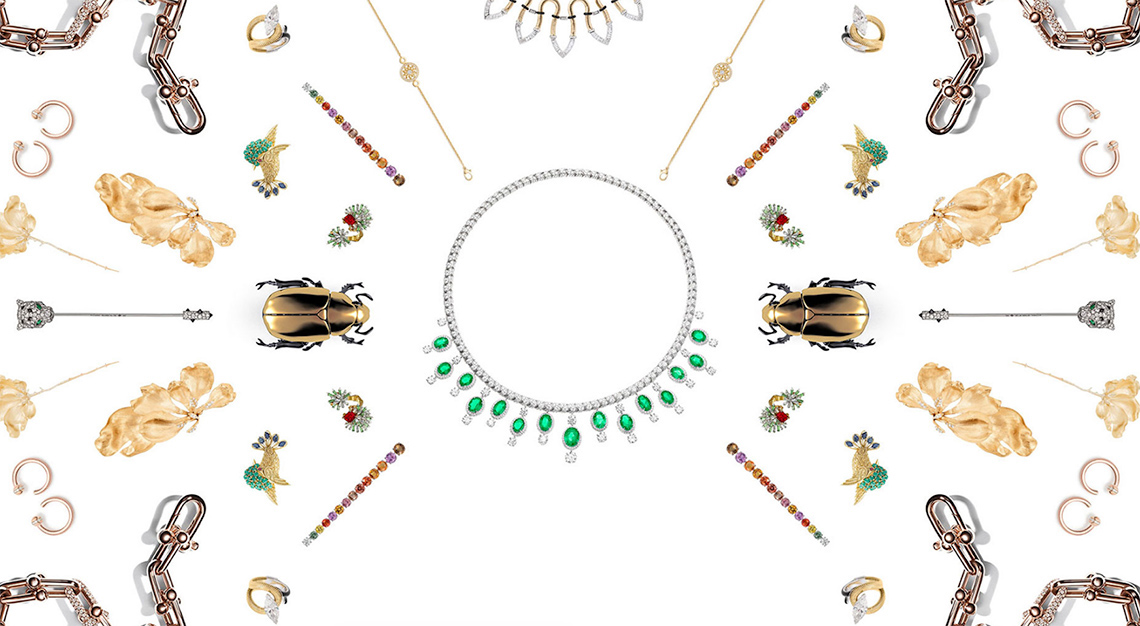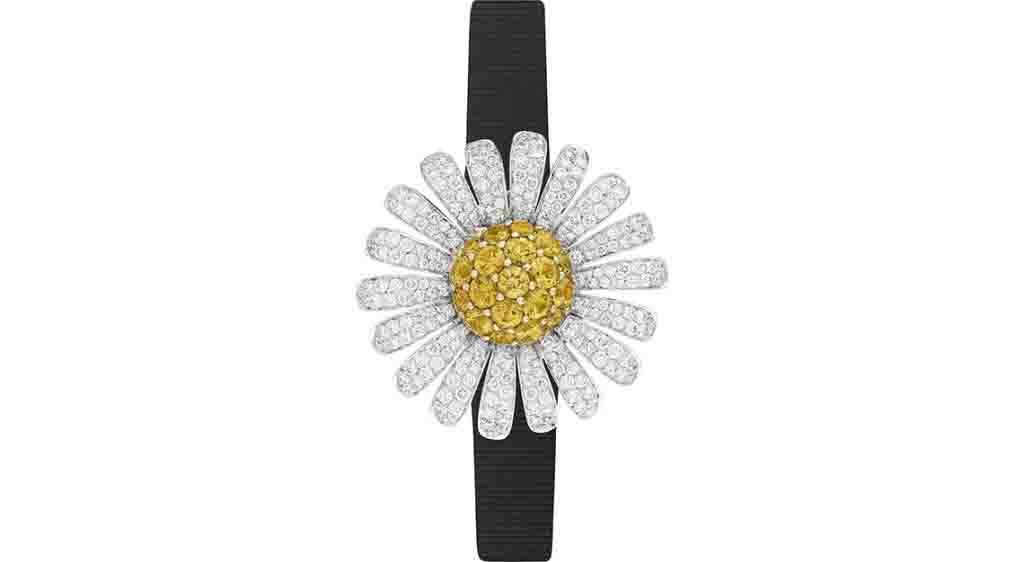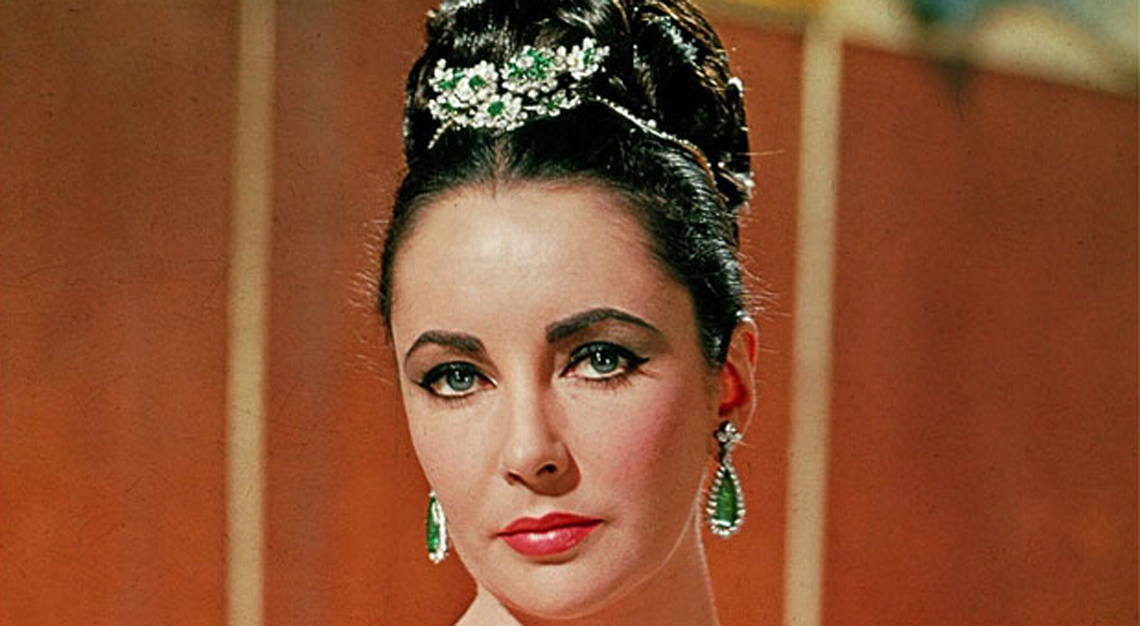Understand the savoir-faire of Van Cleef & Arpels and the history behind its most iconic creations
For more than a hundred years, Van Cleef & Arpels has charmed the world with its inimitable designs. The peerlessness of the Alhambra motif, the elegance of the Ballerina clips and brooches, the breath-taking Zip necklace, and the sheer ingenuity of the mysterious stone setting technique have all placed the maison well above many of the world’s leading jewellers.
Indeed, Van Cleef & Arpels is a jeweller unlike any other, for its very birth was the result of a union of love and a shared passion for beautiful gems. Alfred Van Cleef was the son of a lapidary, or stone-cutter, and his marriage to Estelle Arpels, the daughter of a dealer in precious stones, led to the establishment in 1896 of Van Cleef & Arpels. So the notions of love, joy, passion, and beauty are always central to the creations of the maison.



The creations of Van Cleef & Arpels were always symbolic of the times. Yet there was always an element of creativity and fun. The maison is also known for its technical expertise in handling the jewellery pieces. Its unique savoir-faire has been preserved for more than a century and handed down from generation to generation. Credit goes to the Les Mains d’Or also known as The Golden Hands – the teams of master jewellers and other specialists that continually hone, strengthen and grow the jewellery crafting know-how at the Van Cleef & Arpels ateliers.
In a patrimonial exhibition staged in Beijing’s Today Art Museum entitled When Elegance Meets Art, Van Cleef & Arpels showcased the evolution of its jewellery making style across the decades. From its earliest years to the present day, more than 360 stunning high jewellery creations made their way from France to China, where they stayed for more than four months from 21st April to 5th August.
Presented in a dreamlike setting designed by the Jouin Manku agency, the exhibition began with the inception in 1906 of the Van Cleef & Arpels boutique in Place Vendome. The pieces from the early 1900s showed a distinct mastery of stone crafting and gem setting as well as a clear sense of creativity. At that time Van Cleef & Arpels didn’t only make jewellery but also bespoke luxury objects commissioned by the wealthy elite.



One of the most invaluable creations from its archives is a model of a yacht named the Varuna that dates back to 1907. Made of ebony, green and white enamel, rubies, gold and jasper, it was one of the first special orders of the maison and comes equipped with an electrical contact for a butler’s bell. Jewellery pieces in the 1910s were richly evocative of the Art Nouveau period. Van Cleef & Arpels had made many pieces inspired by nature. Flora and fauna were the main themes and opulence was the order of the day. Platinum was favoured over white gold and large diamonds were used liberally.
The 1920s and 30s were of course dominated by Art Deco influences. This was also the period when Van Cleef & Arpels rose to international fame, as it appeared at some of the world’s most important jewellery expositions. In 1925, at the Parisian Exposition Internationale des Art Decoratifs et Industriels Modernes, its Roses bracelet made of diamonds, rubies and emeralds was awarded the grand prix. The floral theme would then go on to inspire countless other creations of the maison to this day.


Other than more naturalist designs, Van Cleef & Arpels also made jewellery in the more abstract and geometric style of the Art Deco era. For instance, there was a platinum collaret with emeralds and diamonds made in 1929 which was once owned by Her Royal Highness Princess Faiza of Egypt, and a platinum collaret studded fully with diamonds made in 1939 and once owned by Her Majesty Queen Nazli of Egypt.
The 1930s was an important decade for Van Cleef & Arpels. In 1933, Van Cleef & Arpels invented and patented one of the world’s most renowned gem setting techniques: the mystery setting. With this setting, the stones sit securely on the jewellery piece without a single claw in sight. Its secret lies in thin gold rails into which specially faceted precious stones are inserted one by one, very often rubies but also emeralds and sapphires.
Diamonds, however, are almost never set with the mystery technique. The reason for that is purely aesthetical. Being clear and colourless, it’s possible to see the rails underneath the stones, resulting in a look that’s inconsistent with the maison’s ideals of beauty.


A gem-cutter at the exhibition explains: “What distinguishes the Van Cleef & Arpels Mystery Setting from the so-called invisible setting done by other brands is that we are always able to replace the stones. At the end of every rail there is a component called the ‘door’ in through which the stones slide. If anything happens to the jewellery piece, we can simply unhinge the ‘door’ and replace any damaged stone.”
Some of the most astounding examples of Van Cleef & Arpels’ Mystery Setting include the Chrysanthemum clip, the Peony clip, the Boule ring and the Feathers clip.
After the Art Deco era came the Second World War and the creations of the time reflected the zeitgeist. There was an obvious reduction in opulence and the design of the piece became the highlight rather than the stones. Pieces like the Passe Partout series afforded greater mileage and versatility, jewellery became transformable. A pliant gold chain can be worn as a necklace, a belt or a bracelet.
Yet creativity never stops at Van Cleef & Arpels. The 1940s was when Van Cleef & Arpels introduced the iconic Ballerina and Fairy clips. In New York, where Louis Arpels found great inspiration from the world of dance, he proposed a selection of brooches and clips featuring elegant dancers wearing gorgeous dresses made with diamonds, rubies and emeralds mounted in platinum.


When the 1950s rolled around, the dread of war was gone and spirits were high, and at Van Cleef & Arpels even more so because its craftsmen had finally perfected a concept that was patented in 1938. Probably the maison’s single most exalted creation, the daring Zip necklace which can be worn as a necklace or a bracelet was based on a suggestion made to Van Cleef & Arpels’ artistic director Renee Puissant by the Duchess of Windsor.
The style of Van Cleef & Arpels continued to evolve into the 1960s and 70s. These were some of the most creative years of the maison and 1968 saw the birth of its most eternal icon, the Alhambra. Inspired by the four-leafed clover which is a symbol of luck, the Alhambra resonated with the Moorish quatrefoil detail found around the Alhambra Palace in Spain, and so was named thusly.
Van Cleef & Arpels made them in long sautoirs fashioned from braided gold thread combined with polished plates of hardstone enveloped in beaded gold millegrain. Princess Grace of Monaco fell instantly in love with the Alhambra necklace and is known to have several variations in her personal collection.



The modern fine and high jewellery creations of Van Cleef & Arpels have a modern identity but they also continue the traditions set by its most emblematic icons. Whether in the biggest high jewellery pieces or the simplest of trinkets, a Van Cleef & Arpels jewel is always brimming with love, joy, passion, and beauty.






